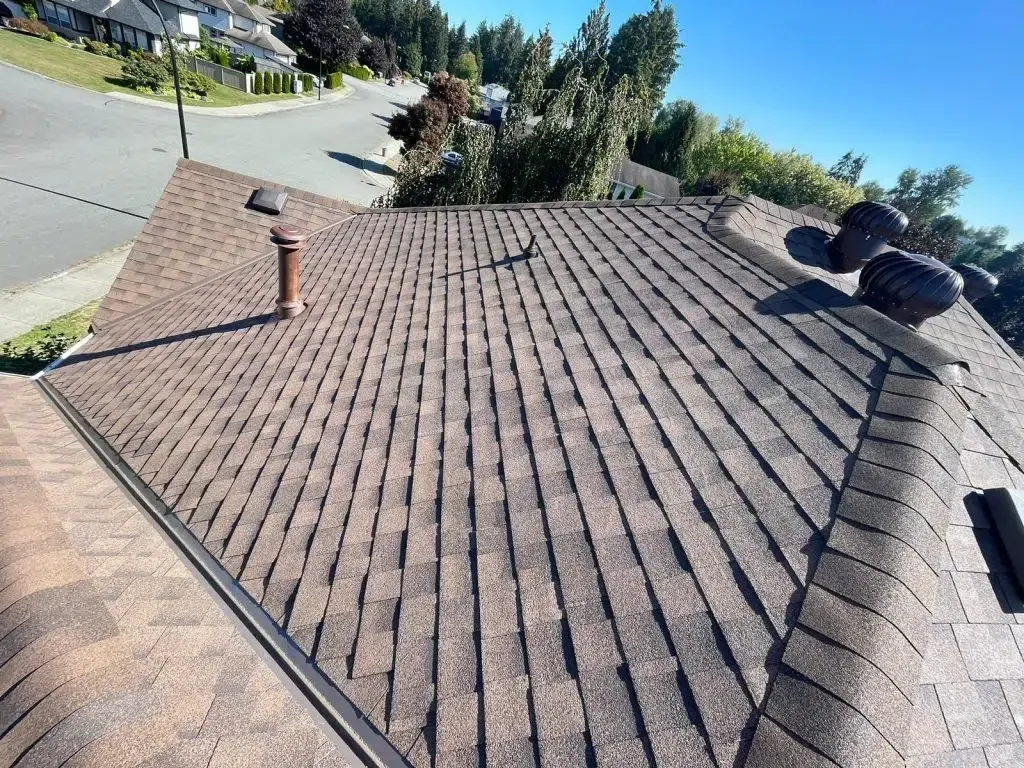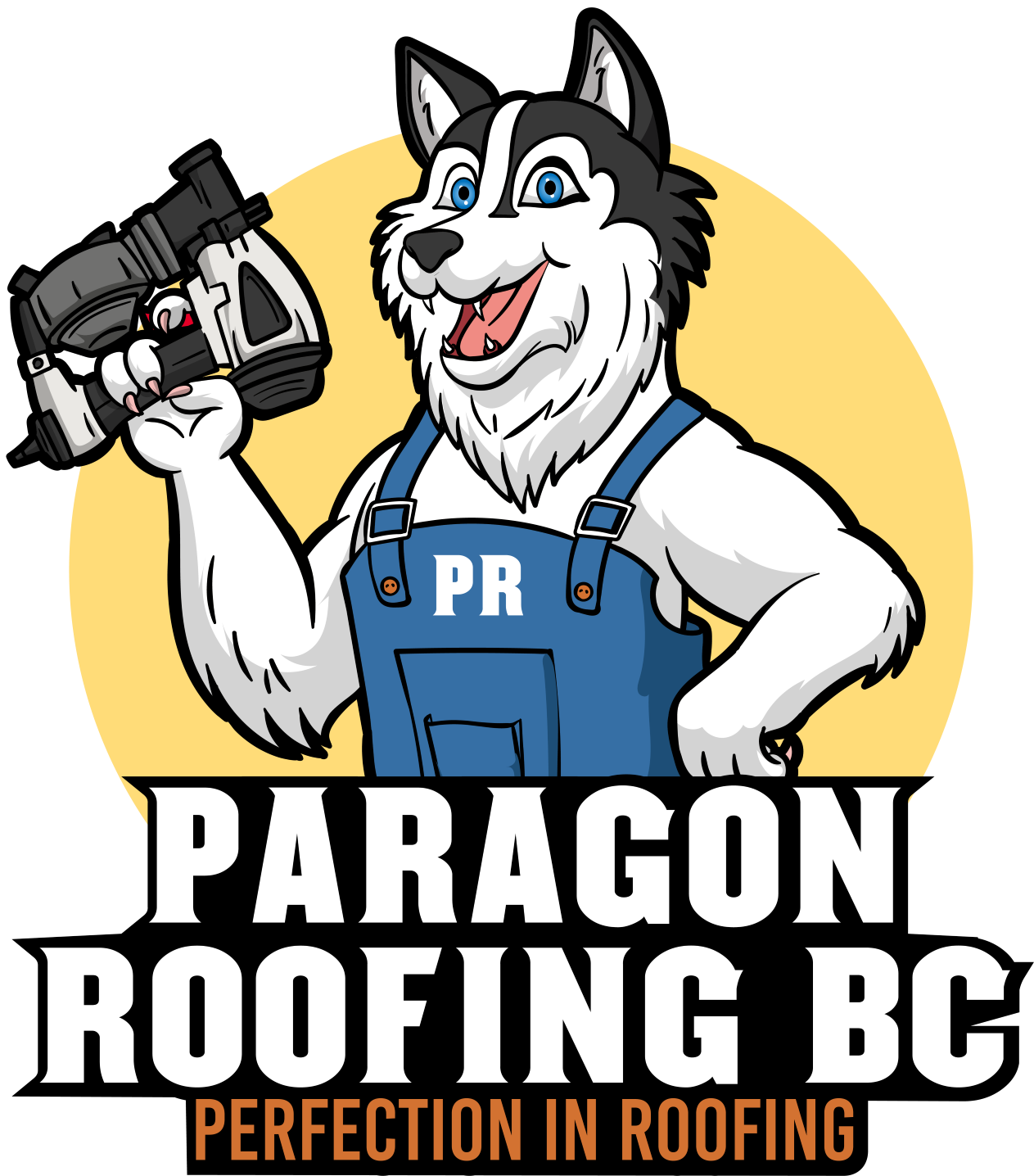Fasteners vs concealed clips: what survives Vancouver wind the best?
Vancouver Wind Survival: Mechanically Seamed Standing Seam vs. Screw-Down Panels
In Vancouver’s wind and winter storms, mechanically seamed standing-seam metal with concealed clips survives best—provided clip spacing is engineered for edge/corner zones, seams are fully locked with sealant where required, and RCABC details (closures, underlayment, edges) are followed. Through-fastened “screw-down” panels can work, but they demand ongoing fastener maintenance and are more vulnerable to back-out and washer failure over time. ([MBCI][1], [us.sfs.com][2], [rpm.rcabc.org][3])
```Need help with roofing in Vancouver ? Get a same-week assessment.
Vancouver wind reality (why this question matters here)
Vancouver’s building by-law publishes climatic design data used by designers: the city lists hourly wind pressures and driving-rain wind pressure values for design, with 1-in-50 hourly wind pressure entries (kPa) that set the tone for component and cladding attachments. In short: the code expects elevated pressures in storms and treats wind + rain as a combined, conservative condition for the envelope. ([BC Publications][4])
Standards also recognize that edges and corners of a roof see the highest suction (negative pressure). While Canadian projects follow NBCC/VBBL, the concept is universal; for instance, ASCE 7-16 enlarges perimeter zones and emphasizes the added demand at corners—useful context when you decide clip spacing or screw patterns near eaves, rakes, and ridges. ([GAF Documents][5], [Structure Magazine][6])
What wind actually does to metal roofs
Wind doesn’t “peel” roofs; it lifts them by creating negative pressure over the surface. The load path is simple:
- Wind suction tries to pull panels up.
- Load transfers to seams and clips (concealed) or to screws and laps (exposed-fastened).
- Those connectors deliver load into the deck/trusses/purlins.
Edge and corner zones act like amplifiers —and that’s where assemblies succeed or fail. Design/testing standards exist to prove the path:
- ASTM E1592(standing-seam/metal panels) measures uplift capacity of panels and their anchors (clips, fasteners) across spans—this is the go-to structural test for concealed-clip systems. ([MBCI][1])
- UL 580 and UL 1897 are uplift tests used to demonstrate how the whole roof covering system resists suction; UL 1897 extends the evaluation for rated uplift pressure. ([MBCI][7])
For code alignment, metal roof systems are expected to meet IBC/NBCC wind resistance via these tests (ASTM E1592 or UL 580/1897), with project-specific design pressures determining clip spacing or screw density. ([AEP Span][8])
Concealed clips + mechanically seamed standing seam: why they win the wind fight
What it is. Panels sit on sliding clips(or anchors) fastened to the deck/subframing. Seams are mechanically locked(single- or double-lock), often with butyl/sealant in the hem at low slopes or high-exposure sites.
Why it performs.
- Continuous load path proven by test. Standing-seam systems are engineered and rated via ASTM E1592 for specific spans and clip spacings. Ratings assume tighter clip spacing in edge/corner zones(the design team sets these from the wind calcs). ([MBCI][1])
- Seam strength. Mechanically seamed joints develop higher resistance and greater weathertightness than snap-lock profiles—critical when winds add rain and vibration. Multiple technical notes put mechanically seamed at the top for harsh weather. ([us.sfs.com][2], [metalcoffeeshop.com][9])
- Movement without prying. Clips allow thermal expansion. Panels aren’t fighting against their own screws each day, which improves fatigue life under cyclic wind. (Exposed-fastened roofs restrain movement, so the screws/holes see more work.)
- Protected attachments. Critical screws are under the panel(not in the weather). You don’t have UV-baked washers or rusting heads at every rib to check.
- Program requirements that force quality. Locally, the RCABC ASM Standard requires architectural metal roofs (for RoofStar guarantees) to use concealed fasteners, with clips secured by no fewer than two screws, and prescriptive detailing for eaves, valleys, ridges, and penetrations. These constraints correlate with durability under Vancouver’s wind-driven rain. ([rpm.rcabc.org][10])
Seam type matters.
- Mechanically seamed(often double-lock, ~180°): best for severe exposure and lower slopes.
- Snap-lock: faster install, but multiple sources (manufacturers and hardware suppliers) note it is less weather-tight and not the first choice for extreme wind + rain sites. ([us.sfs.com][2], [Western States Metal Roofing][11])
Enhancements for wind. In high-risk zones or retrofits, external seam clamps(engineered “stitches” along the seam line) can increase uplift resistance by adding intermediate attachment points between clips—recognized in FM Global DS 1-31 guidance. (This is more common on large panel roofs but the principle carries over: hold seams down in the corners and edges.) ([HubSpot][12])
Related reference: standing seam clip systems Vancouver • For finish longevity in marine climates, see coatings & colors of metal roofs.
Through-fastened (exposed fastener) panels: where they help—and where they struggle
What it is. Corrugated/trapezoidal panels are attached directly through the sheet with gasketed screws. It’s a direct attachment: the wind load goes panel → screw → structure at each fastener.
Pros (often overlooked):
- Immediate uplift strength. Industry manuals point out that direct fastening “ can provide increased wind protection ” because the sheet is positively locked at each screw— when new and correctly installed. ([ATAS International, Inc.][13])
- Simple parts, lower cost. No seamers, fewer specialized components.
Cons (that compound in Vancouver):
- Thermal restraint → fatigue. No sliding clip. Daily expansion/contraction works the screw holes; with years of cycles and wind vibration, screws can back out —reducing wind resistance. Inspectors and industry training note this explicitly. ([InterNACHI][14])
- Washer aging. UV-exposed EPDM washers embrittle; NRCA’s technical writing flags that exposed-fastener washers can begin to fail within a few years in some conditions, and once they crack, water and suction find the path. ([professionalroofing.net][15])
- Maintenance obligation. Expect periodic retorquing and replacement of screws/washer assemblies over the life of the roof (many contractors reference the 10–15 year window for widespread replacement). If that maintenance slides, uplift capacity and watertightness deteriorate at thousands of points. ([Gutapfel Roofing][16])
- Corrosion risk at the fastener. Long-life coated or stainless screws are essential, especially near salt air; manufacturers warn that the fastener becomes the weak link if you get the metal pairing wrong. ([MBCI][17])
Bottom line: Through-fastened can be wind-tough on day one if engineered screw patterns are strictly followed—particularly in edge/corner zones—but in Vancouver’s wet, marine-influenced climate, long-term uplift reliability depends on a discipline of inspection and screw/washer replacement that many homes simply don’t sustain. Concealed-clip standing seam sidesteps that failure mode.
The testing and code context (how we decide “what survives”)
- ASTM E1592 is the structural uplift benchmark for standing-seam/metal panel systems. It tests the panel + seam + clip + fasteners as a system, capturing how flexible metal behaves under suction. Use E1592 data when selecting clip spacing and seam type for your design pressures. ([MBCI][1])
- UL 580 and UL 1897 are uplift tests that rate roof covering systems for resistance to suction. UL 1897 in particular yields psf/kPa ratings you can compare to calculated pressures. ([MBCI][7])
- IBC/NBCC alignment. Industry design guides explicitly connect the code wind provisions to these tests, i.e., “meet the calculated pressures with a tested assembly.” (AEP Span’s design guide quotes IBC 1504.3.2—use UL 580 or ASTM E1592.) ([AEP Span][8])
- Wind zoning. Edge and corner zone multipliers are real; ASCE 7-16 increased perimeter zone sizes vs earlier editions, highlighting the need for denser clip/screw patterns outboard. It’s a strong reminder to treat your edges like a different roof. ([GAF Documents][5], [Structure Magazine][6])
- Local standard of care. The RCABC ASM Standard(roofing practice benchmark in BC) requires concealed fastening for architectural metal, two screws per clip, and careful eave/valley/penetration detailing—exactly the kind of discipline that keeps metal roofs on in wind and keeps water out during wind-driven rain. ([rpm.rcabc.org][10])
Mechanically seamed vs snap-lock vs nail-strip—wind hierarchy (practical)
Mechanically seamed
- Highest seam strength.
- Best for low-slope within product limits and high-wind sites.
- Commonly paired with sealant in seam for weather plus suction. ([us.sfs.com][2])
Snap-lock
- Faster install, fewer tools.
- Acceptable on higher pitches and moderate exposures, but less weathertight/robust under severe wind-driven rain than mechanical double-lock seams. ([us.sfs.com][2])
Nail-strip / nail-hem
- Fastest to install; no clips.
- Not intended for high-wind installations unless specifically tested/engineered—generally a curb-appeal option rather than a severe-exposure solution. (Manufacturers and training content consistently place it below clip-fastened systems for structural performance.) ([Sheffield Metals][18])
Exposed-fastener reality check (what to specify if you choose it anyway)
If your project leans to through-fastened panels(budget, accessory buildings, simple gables), be strict:
- Use a tested panel + pattern that meets your edge/corner pressures.
- Select long-life fasteners(coated or stainless) compatible with your panel metal; mind galvanic couples (e.g., copper vs steel/aluminum). ([MBCI][17])
- Expect to inspect and replace screws/washer assemblies on a cycle (a common field window is 10–15 years, sooner in marine exposure). Plan for it up front. ([Gutapfel Roofing][16])
- Don’t mount in valleys; keep screws on crown/rib per the profile guidance so they live out of the water plane. (Trade guidance, uplift tables, and bracket manufacturers stress crown fastenings.) ([Great Northern Metals][19])
- Watch for fastener back-out in seasonal cycles—if you see it, your wind margin shrinks. Fix the substrate/fasteners before the next storm season. ([InterNACHI][14])
Vancouver-specific assembly that rides out wind (recommended)
For detached homes and townhomes in exposed areas (waterfront, open terrain, ridgelines):
- Mechanically seamed standing-seam, concealed clips, E1592-rated assembly, with clip spacing schedules for field, edge, and corner zones derived from your design pressures. (Engineer or manufacturer’s stamped tables.) ([MBCI][1])
- RCABC ASM details at eaves, rakes, ridges, and valleys; two screws per clip, accepted underlayment package, and engineered closures at eaves/ridge. ([rpm.rcabc.org][10])
- Open-metal valleys over continuous liners for low-turbulence flow in wind-driven rain—reducing water hammer on laps and keeping seams calm. (RCABC practice.) ([Roofing Contractors Association of BC][20])
- Edge/corner discipline: denser clips or stitch devices; treat these zones as a separate roof. (That’s how ASCE/NBCC loads are applied in design.) ([GAF Documents][5])
- If retrofitting an existing standing seam that’s marginal in corners, consider external seam clamps(engineered, tested) to raise uplift resistance locally, per FM DS 1-31 concepts. ([HubSpot][12])
For accessory buildings / budget-driven choices
Through-fastened panels can be used—but only with:
- Engineered screw patterns for edge/corner zones;
- Long-life screws(stainless/coated) matched to the panel metal;
- A written maintenance plan(inspection, retorquing/replacement); and
- An understanding that washers are consumables in our climate. ([MBCI][17], [Gutapfel Roofing][16])
What usually fails first (field autopsy list)
- Edge and corner under-attachment. If clips/screws aren’t densified near eaves/rakes, those zones lift first. (Every modern wind standard calls this out.) ([GAF Documents][5])
- Snap-lock at severe exposures. Fine on many homes, but the lack of a mechanically worked seam gives less margin where wind and rain combine. ([us.sfs.com][2])
- Exposed fastener washers. UV + movement + salt = cracked washers, then leaks, then corrosion, then uplift failures as screws back out. ([professionalroofing.net][15], [InterNACHI][14])
- Wrong fastener metal. Dissimilar metal corrosion eats the connection; manufacturer bulletins are blunt about this in coastal zones. ([MBCI][17])
“Which survives best?” — an honest side-by-side
| Factor | Concealed-clip standing seam (mechanically seamed) | Through-fastened (exposed fasteners) |
|---|---|---|
| Wind test basis | ASTM E1592 / UL 580/1897 assembly ratings | UL 580/1897 when listed; often project-specific patterns |
| Edge/corner strategy | Tighter clip spacing, optional seam clamps | Denser screw patterns; more points to maintain |
| Thermal movement | Slides on clips; low fatigue on holes | Restrained; cyclic movement → hole wear/back-out |
| Weathering at connectors | Screws under panels(sheltered) | Screws exposed; washers UV-aged; periodic replacement |
| Seam integrity | Mechanical locks(often with sealant) | Laps dependent on screw spacing & washers |
| Lifecycle expectation | High— if clip schedule & details are correct | Tied to maintenance discipline on thousands of screws |
Verdict for Vancouver winds: the mechanically seamed, concealed-clip assembly is the default winner for long-term survival and peace-of-mind at the coasts and on open sites. Use exposed-fastened when budgets or building type require it—but go in with eyes open and a maintenance plan.
People Also Ask — concise, snippet-ready answers
Are exposed-fastener metal roofs good in high winds?
They can be strong when new
with the right screw patterns, but washers age, screws can back out, and thermal restraint increases fatigue. Long-term, concealed-clip standing seam
holds wind performance more reliably in Vancouver. ([ATAS International, Inc.][13], [InterNACHI][14])
What standing-seam type is best for wind?
Mechanically seamed
panels (often double-lock) with E1592-rated
clip schedules—plus denser spacing in edge/corner zones. Snap-lock is faster but generally less weather-tight
for severe exposures. ([MBCI][1], [us.sfs.com][2])
Do codes require special tests for metal roofs?
Yes. Metal roofs demonstrate wind resistance via ASTM E1592
or UL 580/1897; designers match tested assemblies to calculated pressures. ([AEP Span][8])
How windy is Vancouver for roof design?
The City’s by-law publishes hourly wind pressures
and driving-rain wind pressure
values used in design—part of the local climate table that informs attachments and details. ([BC Publications][4])
Can I upgrade an existing standing seam for more wind?
Often yes— external seam clamps
and added attachment
in corner zones can boost uplift resistance (see FM DS 1-31 concepts), but get engineering for your specific profile. ([HubSpot][12])
Homeowner/strata checklist: getting the wind details right
- Demand a tested assembly. Ask for ASTM E1592/UL 1897 documentation tied to your exact panel, clip, seam, and spacing. Field/edge/corner schedules should appear on the drawings. ([MBCI][1])
- Choose seam type for exposure. For shoreline/open terrain or tall buildings, specify mechanically seamed with sealant in lock where the manufacturer calls for it. ([us.sfs.com][2])
- Enforce RCABC ASM details. Two screws per clip, accepted underlayment, eave/rake metal, closures, and open-metal valleys per practice. (This is wind and rain insurance.) ([rpm.rcabc.org][3])
- Write edges/corners like a separate roof. More clips or screws—no exceptions—because loads are higher there. (ASCE 7-16 and modern design guides emphasize this.) ([GAF Documents][5])
- If exposed-fastened: commit the strata to inspection and screw/washer replacement cycles; specify long-life or stainless fasteners compatible with the panel metal. ([MBCI][17], [Gutapfel Roofing][16])
Field stories turned into guidance (what we see after storms)
- Good standing seams stay quiet. Roofs with mechanical locks and dense clips at corners walk through winter blows with only cosmetic issues (if any). (This matches the hierarchy presented in test-based guidance.) ([us.sfs.com][2])
- Snap-locks leak at laps on windward slopes when installers skip sealant where the profile demands it or ignore seam height/pitch limits. (A spec discipline issue, not just product.) ([us.sfs.com][2])
- Screw-down barns lose washers first; you hear them before you see them—rattles in a northerly, then the dark halos where EPDM split. Plan the replacement, or plan the re-roof. ([professionalroofing.net][15])
A brief engineering note (why assembly ratings aren’t “one number fits all”)
Assembly ratings depend on panel gauge, rib height/shape, span, clip type, clip spacing, and substrate. The same panel can earn multiple ratings under ASTM E1592 simply by changing clip spacing —especially at edges/corners. That’s why the submittal you want is a table showing spacing vs allowable uplift for your profile, not a generic brochure line. ([MBCI][1])
Maintenance realities (because wind tests are day-one snapshots)
- Standing seam (clips): Visual checks at edges/ridges, confirm closures, inspect for impact damage; usually no routine “tightening” because the primary fasteners are protected.
- Through-fastened: Scheduled screw/washer inspections and replacement, keep a log (zone by zone). Replace with compatible long-life fasteners and avoid reusing holes that have ovalized or stripped. (Industry maintenance notes and manufacturer bulletins emphasize these steps.) ([MBCI][17], [us.sfs.com][21])
Decision guide (pick your path)
Choose mechanically seamed standing-seam with concealed clips if any of the following are true:
- You’re within a few blocks of open water or on a ridgeline (higher exposure).
- Your roof has long eaves and complex corners (more edge/corner real estate).
- You don’t want a maintenance program for thousands of screws.
- You want the best odds of staying put when the forecast shifts from “windy” to “warning.”
Choose through-fastened only when:
- The building type and budget make it the right call; and
- You accept the maintenance: washer/screw replacement cycles, compatible metals, and crown fastenings only; and
- The fastening pattern is engineered for your edge/corner pressures (and you actually follow it).
Final take
If the question is survival in Vancouver winds, the answer is consealed-clip standing seam with mechanical seams —engineered clip schedules, robust edge/corner detailing, and RCABC-compliant water-shedding details. It combines tested uplift capacity(ASTM E1592/UL 580/1897) with movement accommodation and protected fasteners, which keeps structural capacity intact long after the first winter. Through-fastened panels can be stout at installation, but their long-term wind performance is inseparable from screw/washer maintenance and thermal-cycle fatigue. Put simply: if you want to set it and largely forget it, choose the clip-fastened, mechanically seamed route—then build your edges and corners like you mean it. ([MBCI][1], [us.sfs.com][2], [rpm.rcabc.org][3], [GAF Documents][5])
```Need help with roofing in Vancouver ? Get a same-week assessment.
Have more questions about roofing?
Check out our FAQs or give us a call today to speak to an expert roofer in Vancouver Lower Mainland, BC. We're here to help our neighbours make educated decisions about their roof. For our team, we value helping clients save money while making their roofs last.




